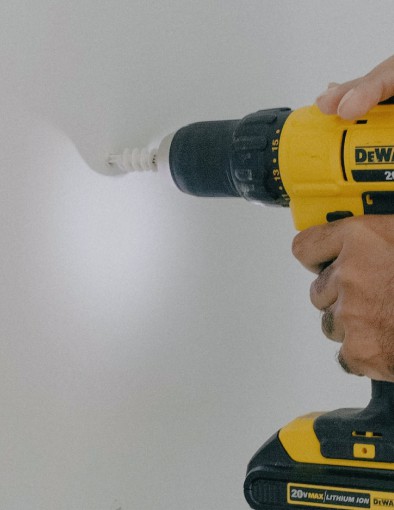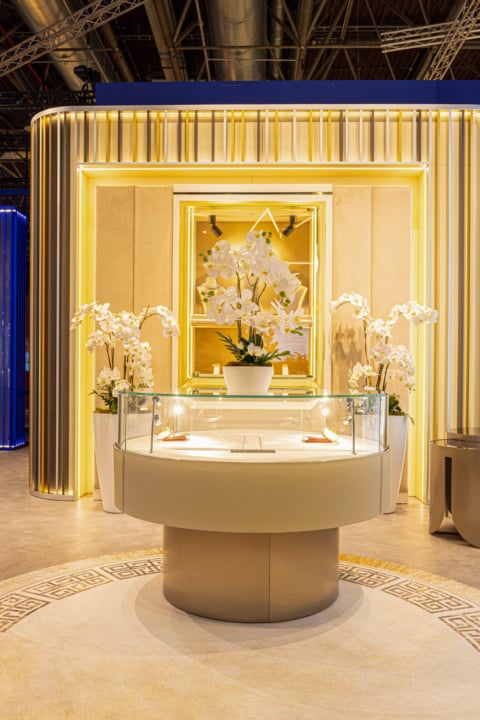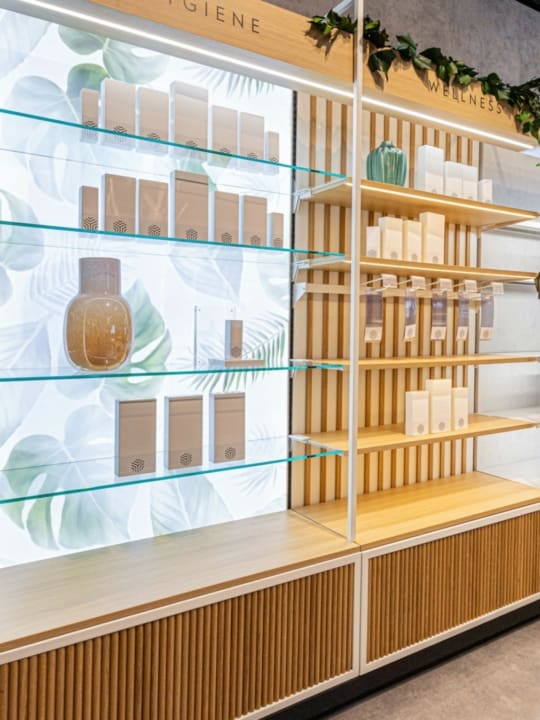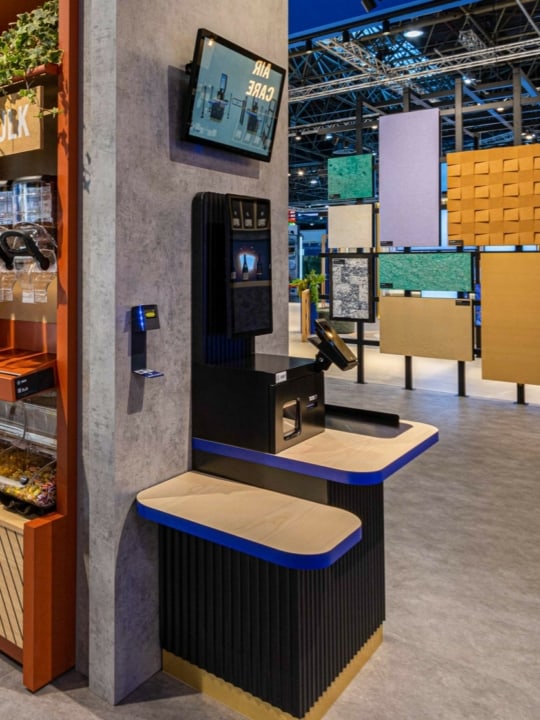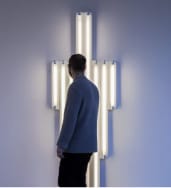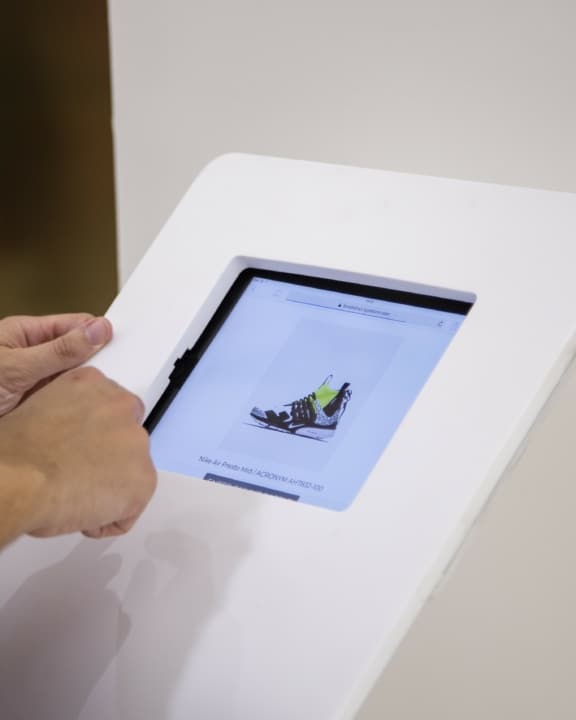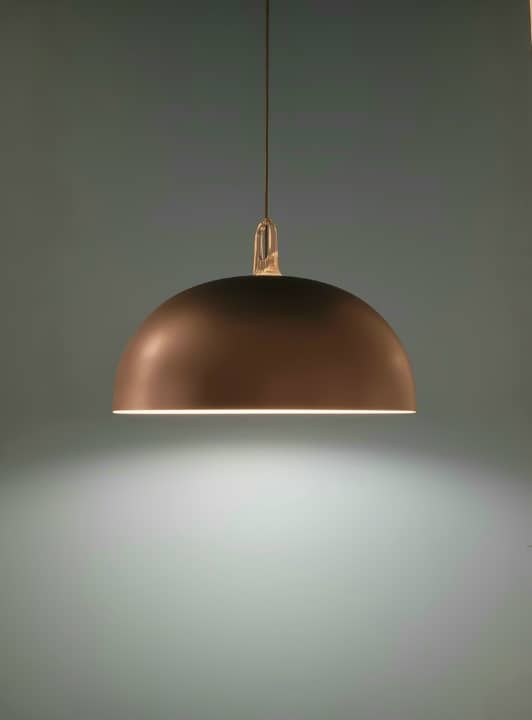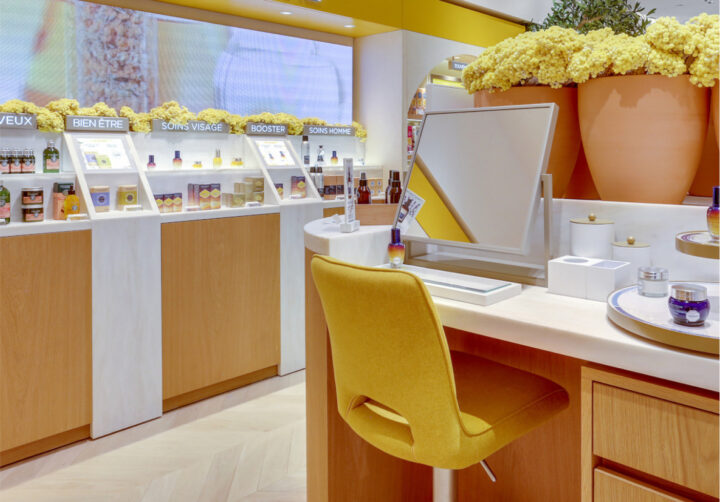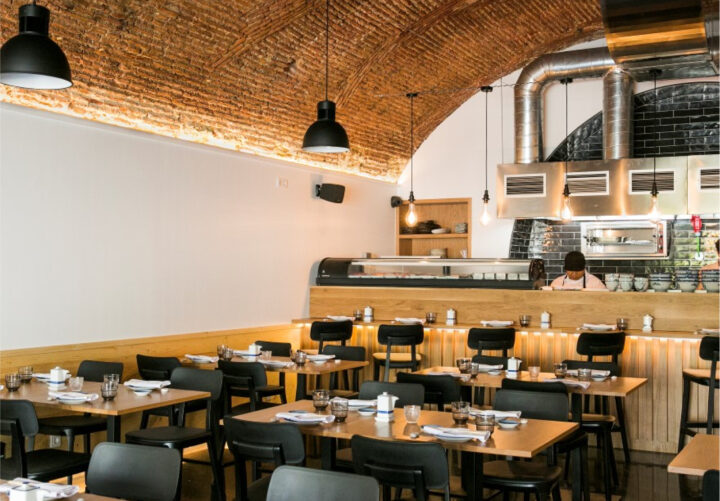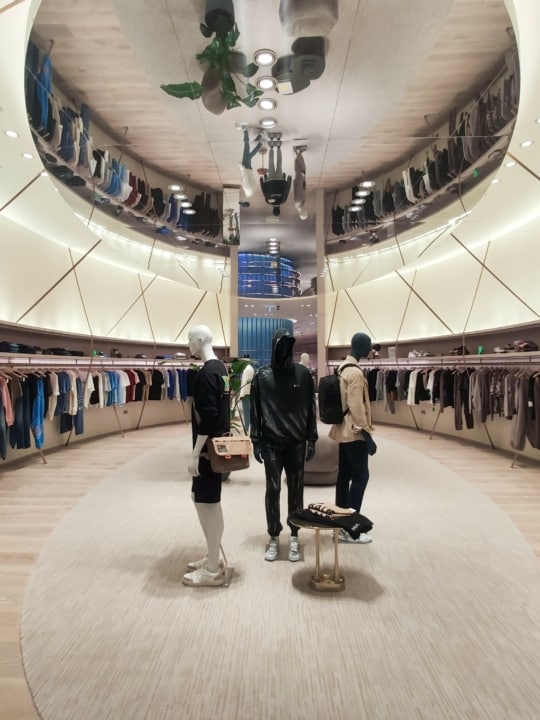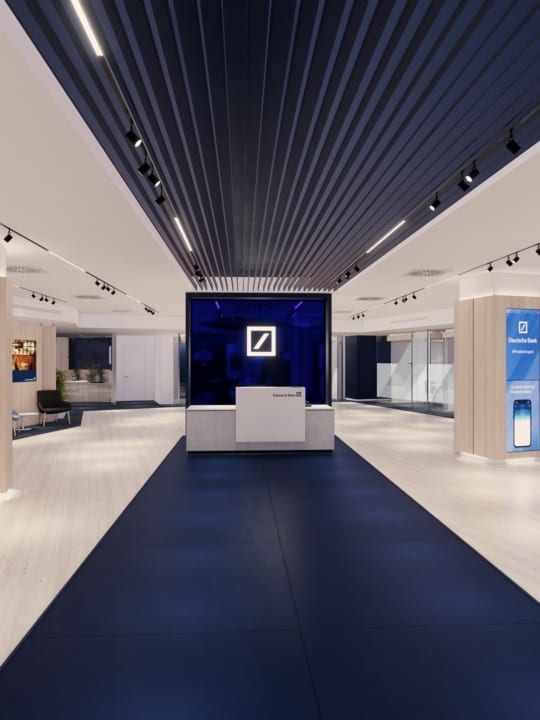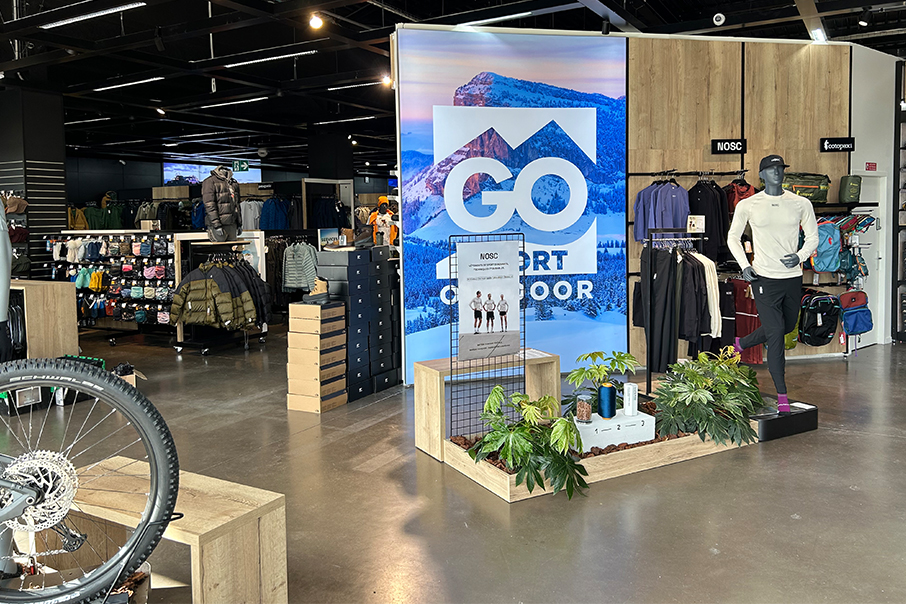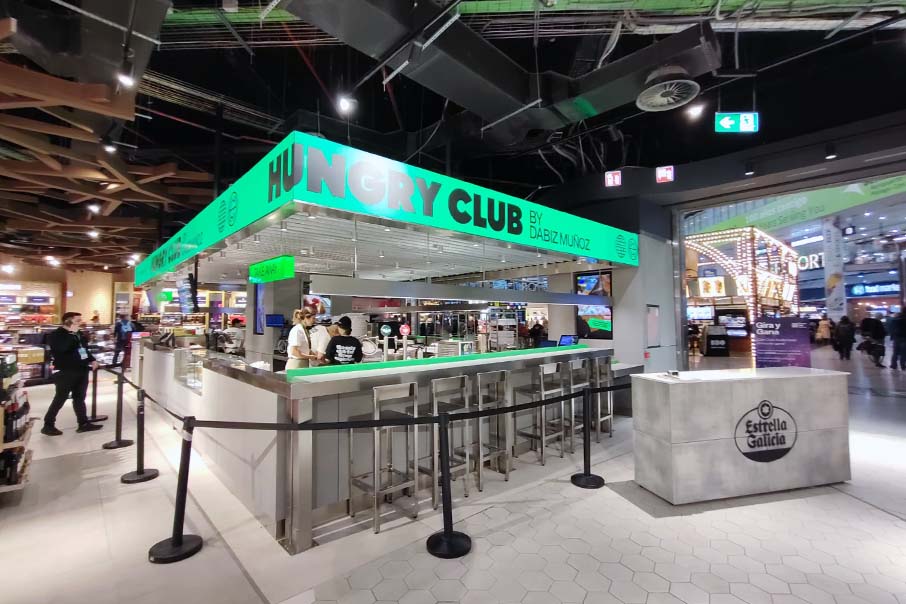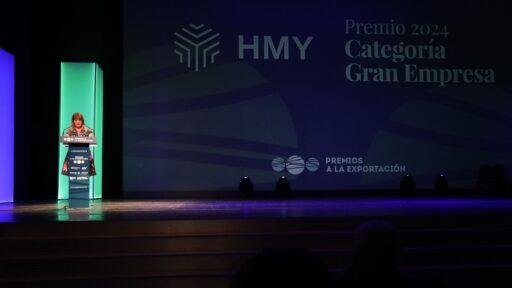Digital Signage as an Architectural Design Element
Digital signage in hospitality and gastronomic spaces is no longer installed haphazardly. Architects and interior designers now consider it from the beginning of the project as a functional and aesthetic element that must harmoniously integrate with materials, lighting, circulation flow, and the visual concept of the space.
Immersive Design in Hotels
Reception areas with LED screens integrated into walls or enveloping structures that welcome guests, provide event information, or serve as dynamic artistic backdrops.
Lobby experience: curved screens or modular panels integrated into ceilings or columns to create an immersive atmosphere, synchronized with the brand identity.
Functionally designed rooms: flat screens embedded in furniture or partition walls, seamlessly integrated into the design without disrupting the harmony of the space.

Restaurants with Architectural Signage
- Signage as part of storytelling: vertical or large-format screens that reinforce the restaurant’s concept with thematic or artistic visual content.
- Screens in waiting areas that act as interactive sculptural pieces while customers wait for their table.
- Interactive kiosks: an efficient solution to streamline the ordering process. These self-service terminals allow customers to manage their orders without staff assistance. Thanks to their intuitive interface, they enhance the customer experience and optimize workflow in the restaurant.
- Digital menus integrated into wood, metal, or glass structures that blend with the venue’s style, maintaining design coherence.
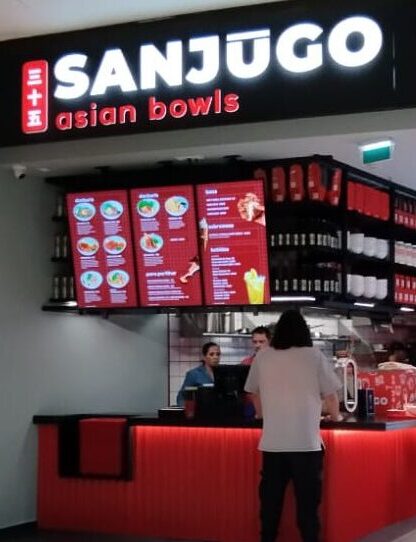
Benefits for Architecture and Design in the Hospitality Channel
- Functional aesthetics: Digital signage replaces printed elements with smart, clean, and modern surfaces that add dynamism without visually overwhelming the space.
- Modularity and adaptability: Screens can be installed as movable panels, recessed, suspended, or even in mirror format, allowing designers to play with shapes, textures, and compositions according to the project’s style.
- Integrated communication: Designers and architects can collaborate with marketing or communication teams to create a smooth flow of information that is visually coherent with the environment.
- Space optimization: In small spaces, screens replace multiple graphic and functional elements (menus, directories, signage), freeing up space and simplifying user navigation.
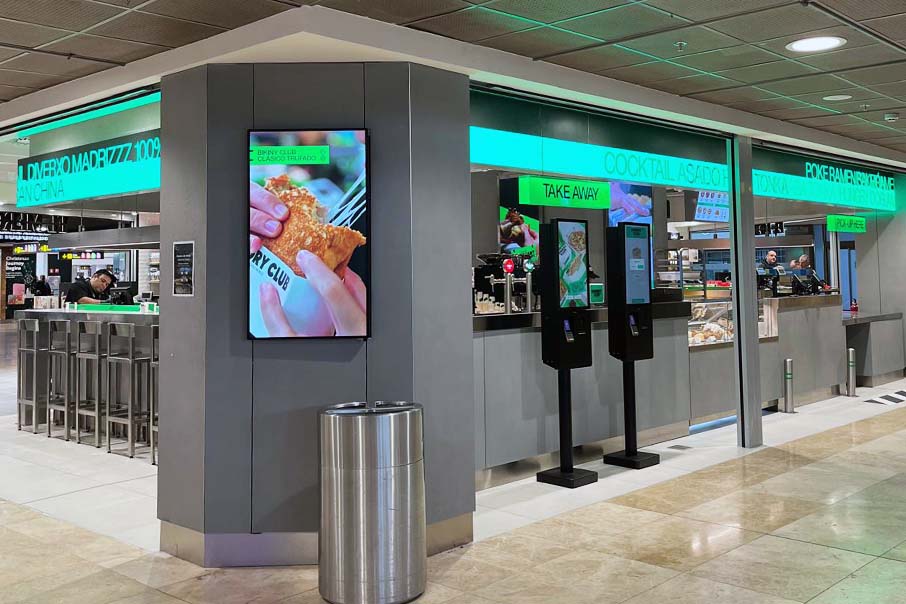
Effective Architectural Integration Cases
Boutique hotels that integrate artistic screens with technology in hallways or common areas to enrich the guest experience.
Conceptual restaurants where screens display the origin of ingredients or live preparation, reinforcing the chef’s storytelling.
Industrial-style bars that use backlit digital signage as part of the decor or to project different atmospheres depending on the time of day (breakfast, afterwork, dinner, events).
Recommendations for Coherent Implementation
- Include digital signage in the architectural design briefing from the start of the project.
- Integrate it with furniture and finishes to avoid screens that feel “tacked on” without aesthetic cohesion.
- Design content in collaboration with interior designers to maintain a visual palette and harmonious rhythm with the rest of the space.
- Opt for custom solutions: motorized mounts, transparent screens, LED panels in column or ceiling shapes, adapted to the formal language of the venue.
Digital signage has evolved from a simple informational support to an essential architectural design element in hotels, restaurants, and cafés. Its integration from the early stages of the project enables the creation of smarter, more coherent, and visually impactful spaces. Beyond its communicative function, it acts as a bridge between the environment’s aesthetics and the customer experience, offering dynamic content that reinforces the business’s identity.
At HMY, we develop digital solutions that naturally adapt to the space, providing operational and emotional value. Thus, each screen becomes an opportunity to surprise, connect, and build loyalty.




